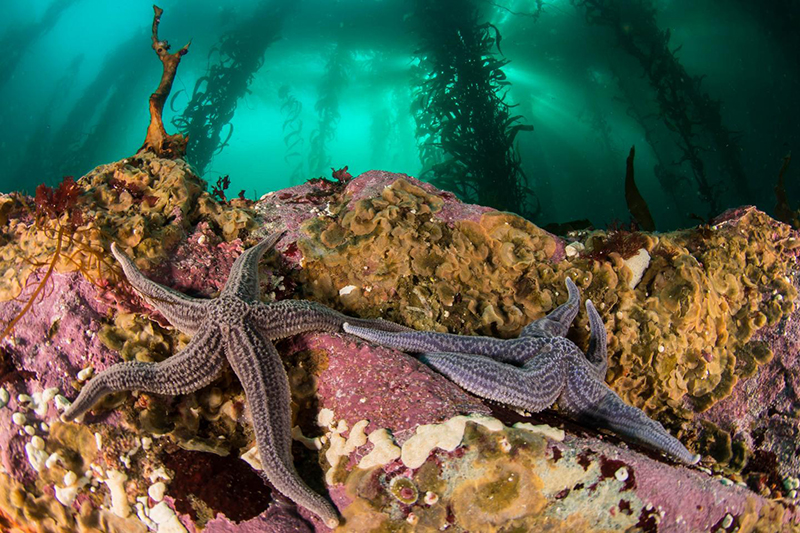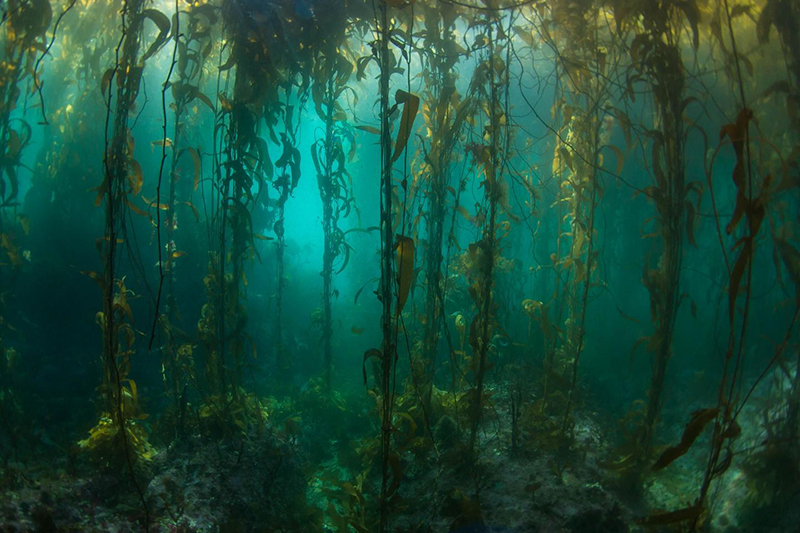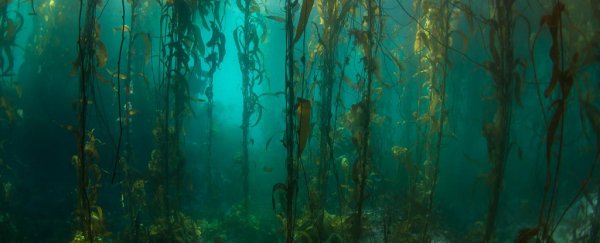Scientists have returned to a group of underwater kelp forests off the tip of South America for the first time since 1973 – and they've found the ecosystem virtually unchanged despite the passage of nearly half a century.
These seaweed forests, close to Tierra del Fuego, are something of a marine marvel; experts say we can learn some important conservation lessons from them.
Kelp forests like these are under threat from climate change and human activity, but divers found that this particular stretch had the same numbers of kelp, sea urchins and sea stars as it did in the early 1970s.
 (Enric Sala/National Geographic)
(Enric Sala/National Geographic)
What's more, the researchers didn't spot any signs of urchin barrens – this is a harmful type of unchecked sea urchin grazing that's been spotted in other kelp forests, and which can quickly reduce kelp levels.
"The kelp forests of the extreme tip of South America are some of the most pristine on Earth and have not changed substantially since the early 1970s, when they were first surveyed," says oceanographer Alan Friedlander, from the National Geographic Society.
"Re-examination of this remote region is incredibly valuable in this age of climate change, and gives us a better understanding of how these ecosystems function in the absence of direct human impacts."
The remote location, lack of human activity in the area, and rough surrounding seas are likely to be responsible for having kept these parts of the ocean locked in their own time capsule, according to the researchers.
Besides direct observations underwater, the scientists also looked at satellite imagery from the last 20 years, noting that kelp coverage seems to move in four-year cycles based on rainfall patterns.
 (Enric Sala/National Geographic)
(Enric Sala/National Geographic)
In terms of fish populations, the team did find some variation: levels of different species, including pipefish, pink cusk-eel and rock cod, tended to depend on how well-sheltered the sample site was from ocean waves.
The work fills in some of the gaps in our knowledge when it comes to kelp forest protection. If scientists are going to understand how these submarine ecosystems are evolving and how they can be protected, they need to know about the ones that haven't changed as well as the ones that have.
Kelp forests are some of the most diverse and vibrant ecosystems on the planet, cropping up extensively along shallow, rocky coasts in cold water habitats, and this particular group plays a significant role in the entire South American ecosystem. The challenge now is to make sure it remains largely unspoilt for the next 50 years.
"This region is one of the last global refuges for kelp forest ecosystems and supports large populations of seabirds [and] marine mammals, and has high biodiversity value due to high endemism and unique community composition," conclude the researchers in their paper.
"There is therefore an urgent need to protect this region for its biodiversity values and the ecosystem services it provides."
The research has been published in PLOS One.
